
Artisan bread trends
June 20, 2023
By
Colleen Cross
The art, science and future of artisan breadmaking
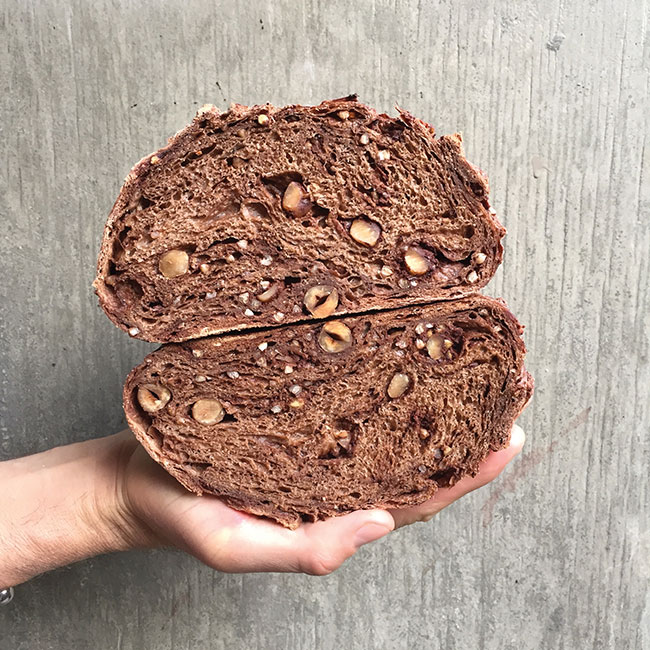 Ritchie’s Bakery’s hazelnut and buckwheat loaf with dark chocolate sourdough contains 30 per cent whole-grain red spring wheat.
Photo: Lauren Ritchie, Ritchie’s Bakery
Ritchie’s Bakery’s hazelnut and buckwheat loaf with dark chocolate sourdough contains 30 per cent whole-grain red spring wheat.
Photo: Lauren Ritchie, Ritchie’s Bakery What makes artisan bread uniquely artisan? Is it the ingredients, the techniques, the time and care spent fermenting before the bake? We spoke with three dedicated professional bakers who specialize in artisan breads to learn what this craft means to them, how they are promoting it and where its future lies.
What is artisan bread?
Heinz Hubbert has been baking artisan breads for decades. Through his consulting business, Badger International, based in Huntsville, Ont., the Certified Master Baker helps bakeries of all sizes from all over the world improve efficiencies, clean up their labels and develop high-quality organic breads and pastries.
For much of the year, Hubbert travels – he has worked in 55 countries. “I have a system that I teach clients. We make bread using five different sourdoughs and we recycle dough,” the genial Hubbert says. From June to Labour Day, however, he operates a small-batch bakery called The Little Badger House and teaches baking classes designed for the public including children’s classes.
Hubbert is a trained rye and rye-blend bread baker. In 1976 he started learning the artisan way to make white breads from Raymond Calvel, whom he says is considered the father oh the artisan bread movement.
“When I grew up artisan baking meant bread with blisters was a mistake. We were not allowed to have sugar bubbles on the crust,” the longtime baker says, adding with a laugh: “In 1976 I was more focused on white bread. Now it’s very simple for me – if I make a mistake, it’s artisan.”
A self-described purist, he has one important stipulation: The bread needs to be chemical-free and the flour should be clean-label.
“I use natural flour, untreated with chemical additives. The sourdoughs we use are all natural. It’s more the method that makes the artisan baker – how to use ingredients and do it properly.”
Hubbert trained in Germany, which he estimates has 1,800 types of bread, and Austria, which has some 600. For perspective, Canada has about 150. Hubbert has a repertoire of some 4,000 sourdoughs.
“The artisan way is a combination of slow fermentation and working with a person who knows how to treat the dough properly,” he says. Small bakers focus on the fermentation, whereas larger commercial bakeries must use different equipment and techniques to bring out the flavour, Hubbert says.
“Before long fermentation, each loaf goes through my hands seven times, including folding the dough, mixing, shaping, putting it in the retarder, taking it out, scoring it,” he says. “It is a lot of work and the price should reflect that work at any bakery: $9 a loaf is not too much.”
A current favourite loaf is he makes is The Three Sisters, a bread that builds on health properties of rye and pumpkin seeds. It’s a blend of three different sourdoughs – French, Italian and Belgian – “surrounded by toasted pumpkin seeds.” The loaf is slow fermented overnight to allow the flavours to develop.
Ritchie’s Bakery in Vancouver, established in 2018, sells artisan breads and pastries handcrafted in small batches through local farmers markets and weekly bread drops at four partner locations in central Vancouver – an ice cream shop, coffee shop, a different type of bakery and a commissary kitchen from which owner and head baker Lauren Ritchie bakes. “I started this model out of necessity,” Ritchie says. “I wanted something mid-week in addition to the farmers markets. It’s a good way to collaborate.”
“Our sourdough breads are naturally leavened using our own starter, fermented slowly to promote flavour, nutrition and digestibility,” she adds. “We use flour and grains that are organic and Canadian-grown and most flour is locally milled. We try to limit sugar, substituting refined white sugar for maple syrup, dates, fruit purée or similar natural unrefined sweeteners.” When available, they choose products in season and grown locally by small, family-owned suppliers.”
Ritchie studied biology at university but fell in love with bread baking while training at Northwest Culinary Academy. “The science really really interested me. It’s like doing an experiment, it’s so neat how little factors can change the end result.”
“When I say artisan I consider it small-batch, made by hand,” Ritchie says. “I use a commercial mixer but I hand-shape, I feel the dough. I’m part of an organization that is fighting for what they call “Real Bread,” so I try to educate my customers. It’s about using no preservatives, no additives. Flour, water, inclusions, salt. So the ingredients are more important to me than the artisan technique. My slow fermentation develops flavour. It’s hard to do it large scale, but it’s totally worth it to take your time and keep it small.”
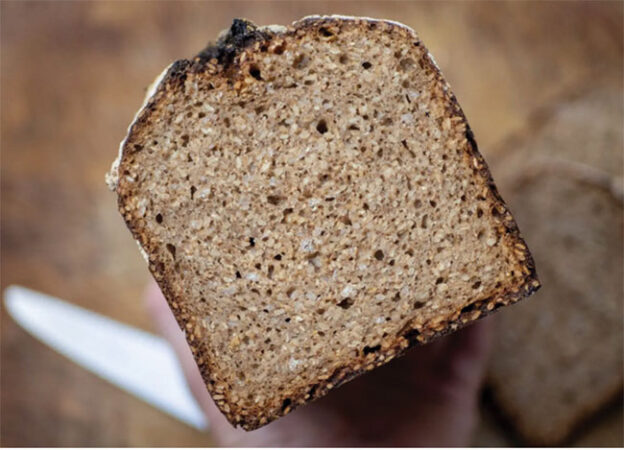
100% Whole Grain Buckwheat Sourdough with Sesame, Honey and Beer. Photo: Matthew James Duffy
Matthew Duffy baked for 15 years in specialty bakeries and Michelin-starred restaurants worldwide before taking on the role of baking professor at Centennial College in Toronto. Duffy teaches online courses, consults and shares his experiments and knowledge with thousands of followers on social media.
Duffy hesitates to define artisan bread. “It can be used as a marketing term, so it does get a little challenging. It comes down to respect for tradition and the craft. I’m constantly learning and tweaking what I do. It’s small, craft-based baking. It comes down to how products are being made and processed and what’s inside them. Can you use a commodity wheat? I don’t think so. But does it need to be 100 per cent whole-grain? I don’t think so.”
“Let’s say I have a small artisan bakery and I shape everything by hand. What if I grow and buy a mechanical dough divider? A spiral mixer? Where do you draw the line? I think using technology to enhance the bake is great – for example, a steam-injected oven that helps pinpoint the hotspots and track the data.”
Innovation
The three bakers each have their own idea of what innovation means. For Hubbert it starts with learning. “I like to understand why the baker is doing what they’re doing. When I learn about different flours and ingredients, I then have the knowledge to try out another flavour profile.”
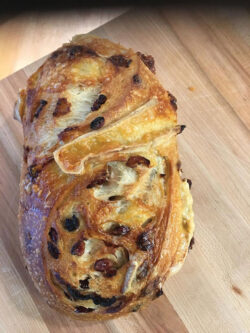
Heinz Hubbert’s cranberry brie loaf with chocolate and apricot and baked on volcano stone, The Little Badger House’s top seller. Photo: Badger International
He uses a certain amount of rye flour because gluten intolerance is increasingly common. “Rye has an ingredient in it that weakens the gluten and causes the bread to lose volume. The more rye I use, the harder it is to call it artisan because I have to make it in one day.”
Hubbert’s innovations include adding milk to create a unique flavour and colour, and reducing waste. “We use excess bread for as dumplings, croutons and stuffings. I have a tool for milling fresh bread. One of my bigger clients was a sandwich producer who threw ends into the ocean for seagulls. He was able to recycle his bread pieces that he loves into a new batch giving him approximately 36 loaves at 11 sandwiches per loaf.”
Ritchie says, “I like experimenting with adding different things into my bread to introduce flavours that are not traditional and that add colour to my bread, for example.” She points to her spinach sourdough in which “you can hide half a bag of spinach.”
Ritchie has incorporated uncommon grains, vegetables, spices, mashed bananas and hazelnut into her breads.”
Duffy describes his latest passions. “Sourdough pistachio brioche – dough infused with pistachio purée – in my oven right now,” he says during our conversation. He sometimes bakes with yeast, noting, “Some of the best breads have a combination of yeast and sourdough.” He also has been experimenting with flatbreads, baking in his backyard wood-fired oven.
The future of artisan baking
Although Hubbert would like to see the art and science of artisan baking carry on into future generations, he worries it is an endangered craft.
“Unless you really want to be creative – an artist – you will be overworked and underpaid. You can have a microbakery or a pocket bakery. I don’t see much growth in the labour pool. I see more potential for growth in new equipment and new ingredients.”
“Our knowledge, our attitude toward baking may be lost 10 years from now.”
Hubbert believes there aren’t enough teachers to increase teaching of artisan baking in trade schools and colleges. “Artisan baking should be taking over our colleges,” he says. “Instead, the bakery program is combined with the pastry trade. It’s like having plumber and electrician under one roof.”
“The art of artisan will continue but not to the point that we would like to see. Small-batch baking and small stores will not feed the amount of people who need bread. So we have to invent larger bakeries with equipment that can handle stress-free doughs and imitate gentle treatments of breads and buns in order to feed our future bread connoisseurs.”
Ritchie is hopeful. “For a lot of younger chefs, especially those coming out of culinary or pastry school, there’s more focus on artisanal, small-batch local baking. There’s nowhere but up to go from here. Customers are more and more interested in small-batch and talking to bakers. There are so many resources now. The flour I use is from a local mill. When I started, it was hard to get good flour. Farmers are focusing on more varieties of wheats and ryes, so I’ll be trying different grains.”
Duffy is bullish on the future of artisan bread making. “A lot of people are becoming more aware of consuming whole grains and interested in where flour comes from.
“I don’t see artisan baking as endangered. More people than ever are baking. The number 1 question I get from people is ‘How do I scale up my baking?’ ”
Print this page
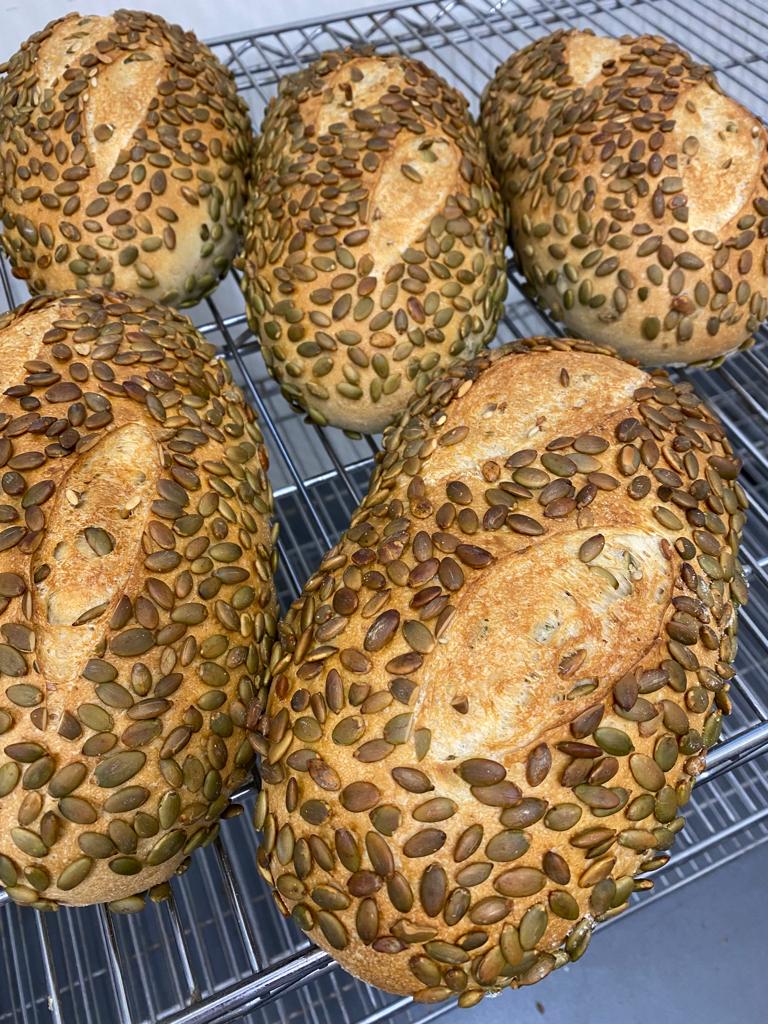
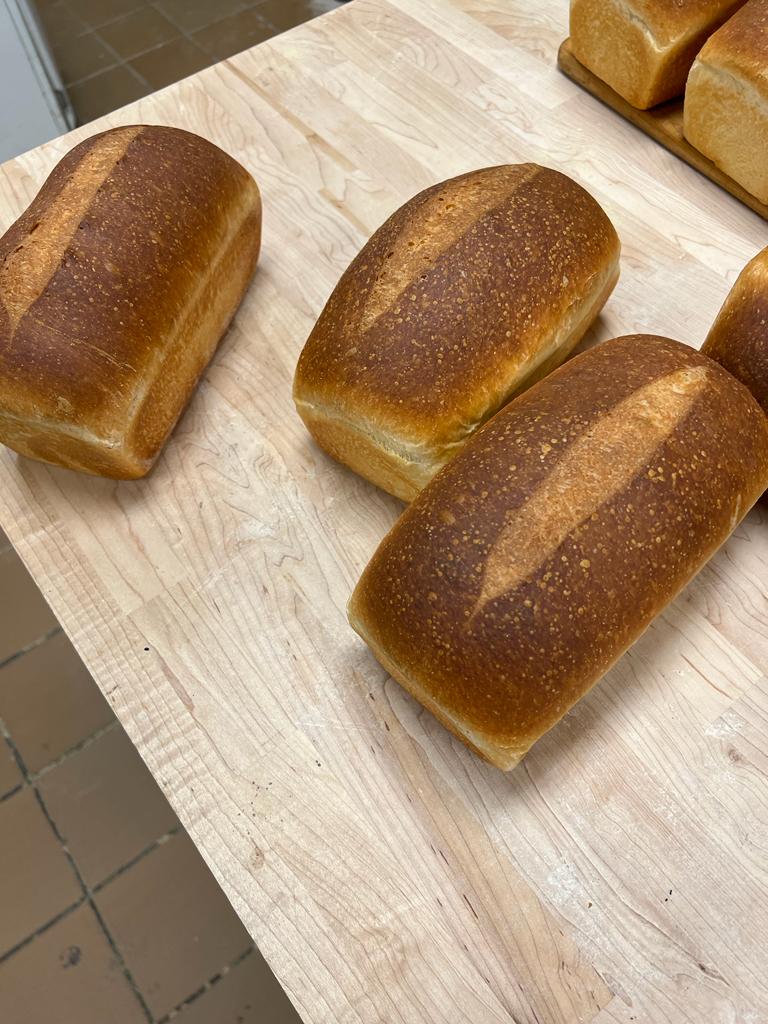
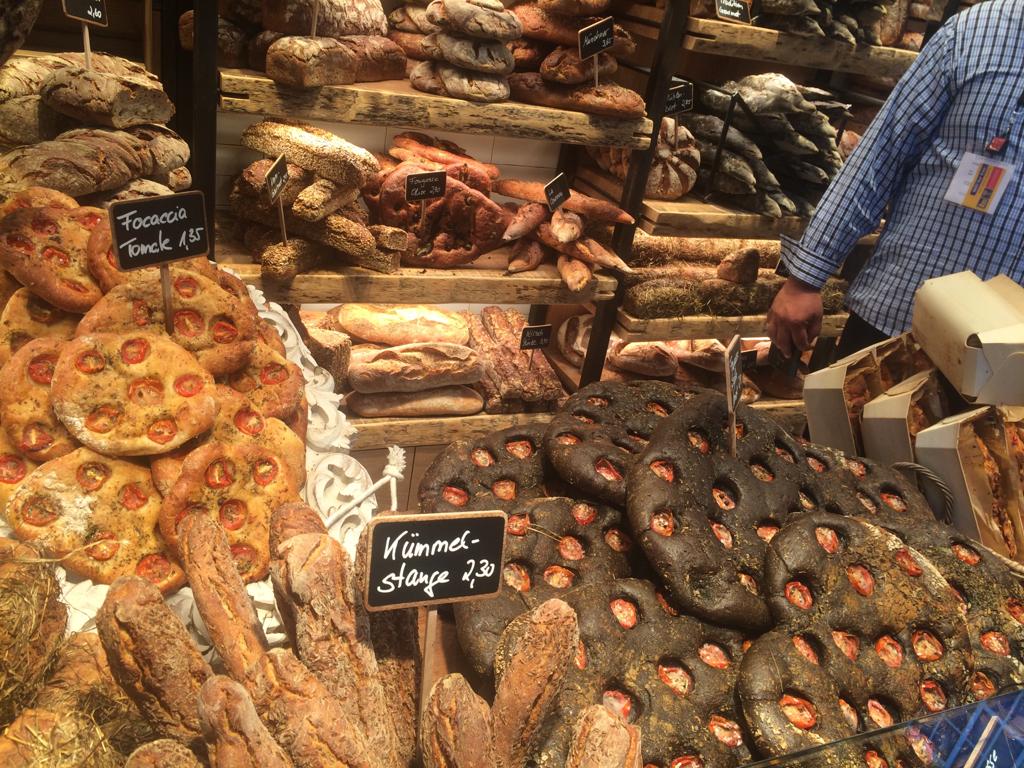
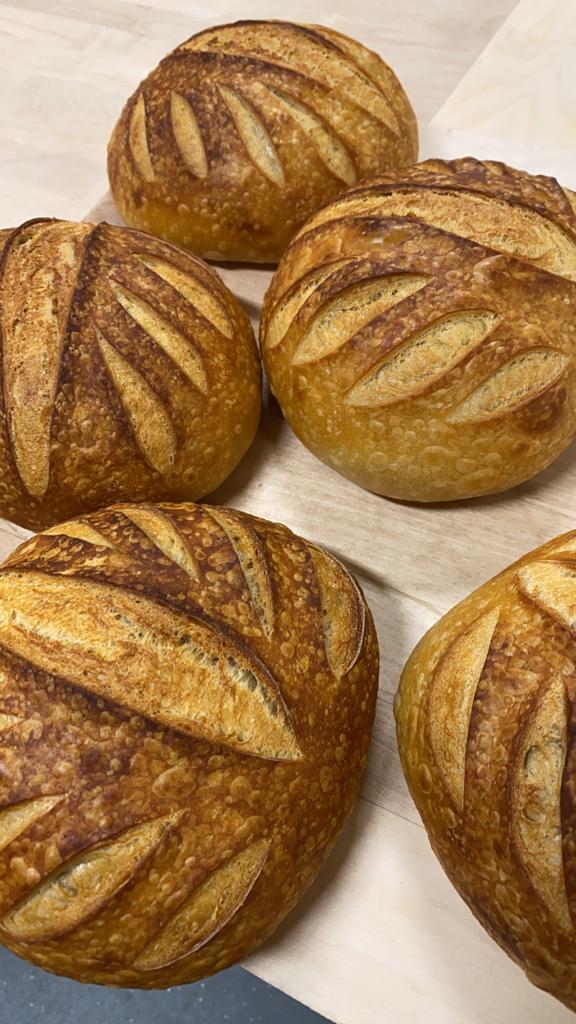
Leave a Reply